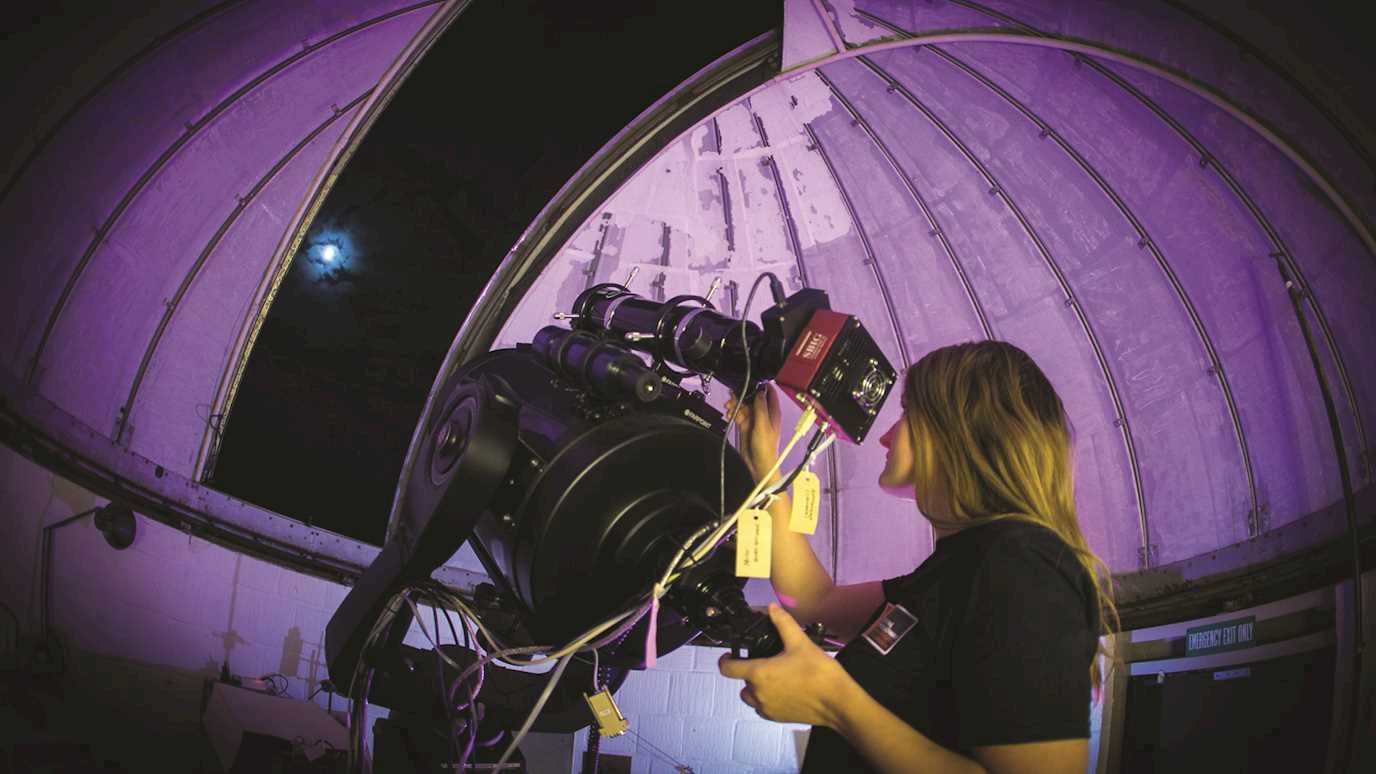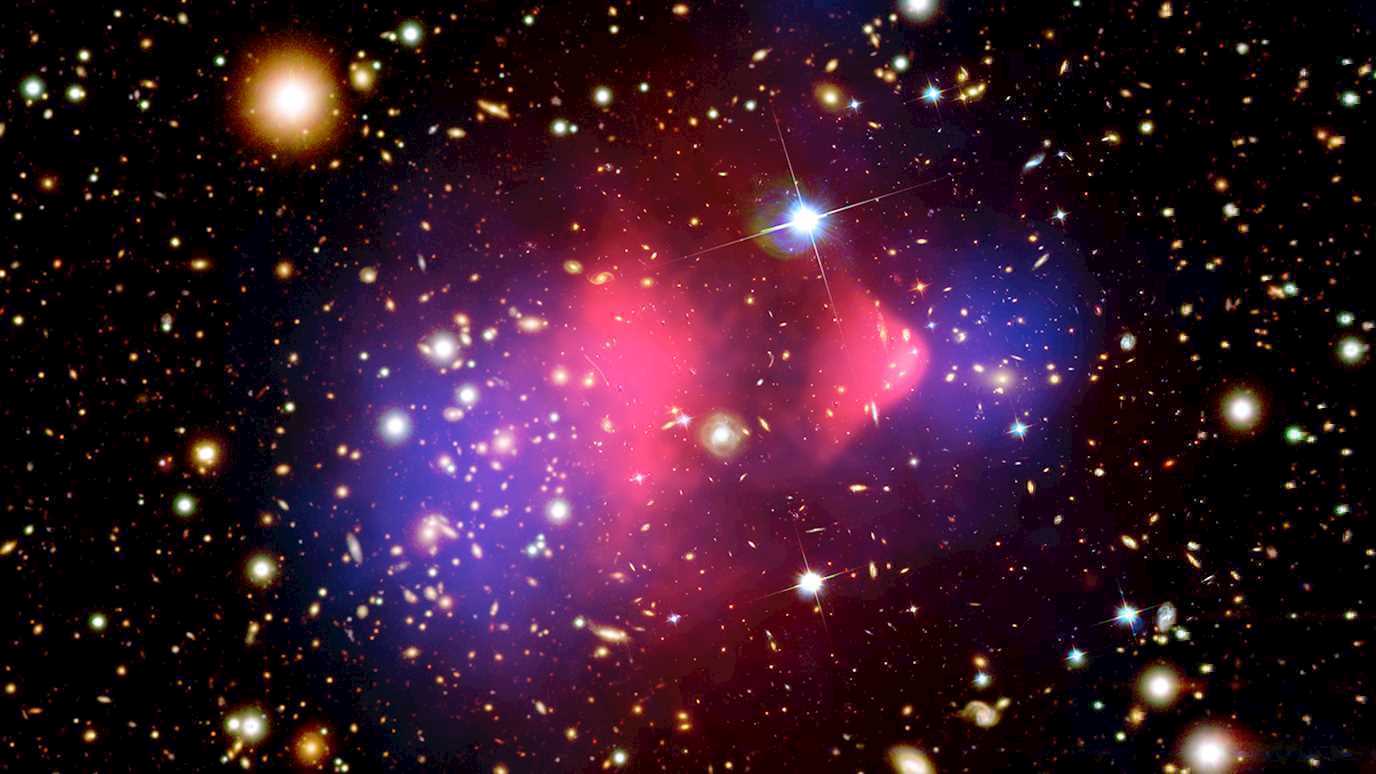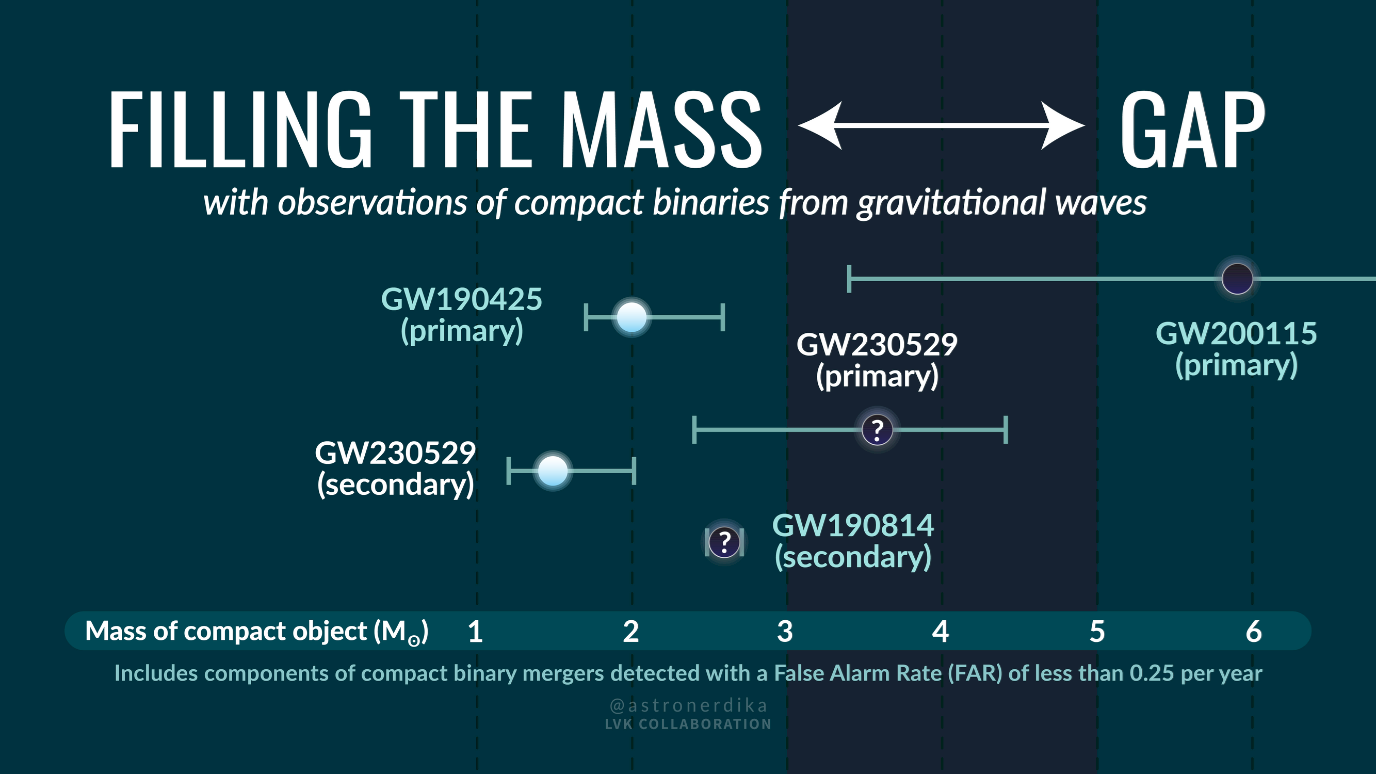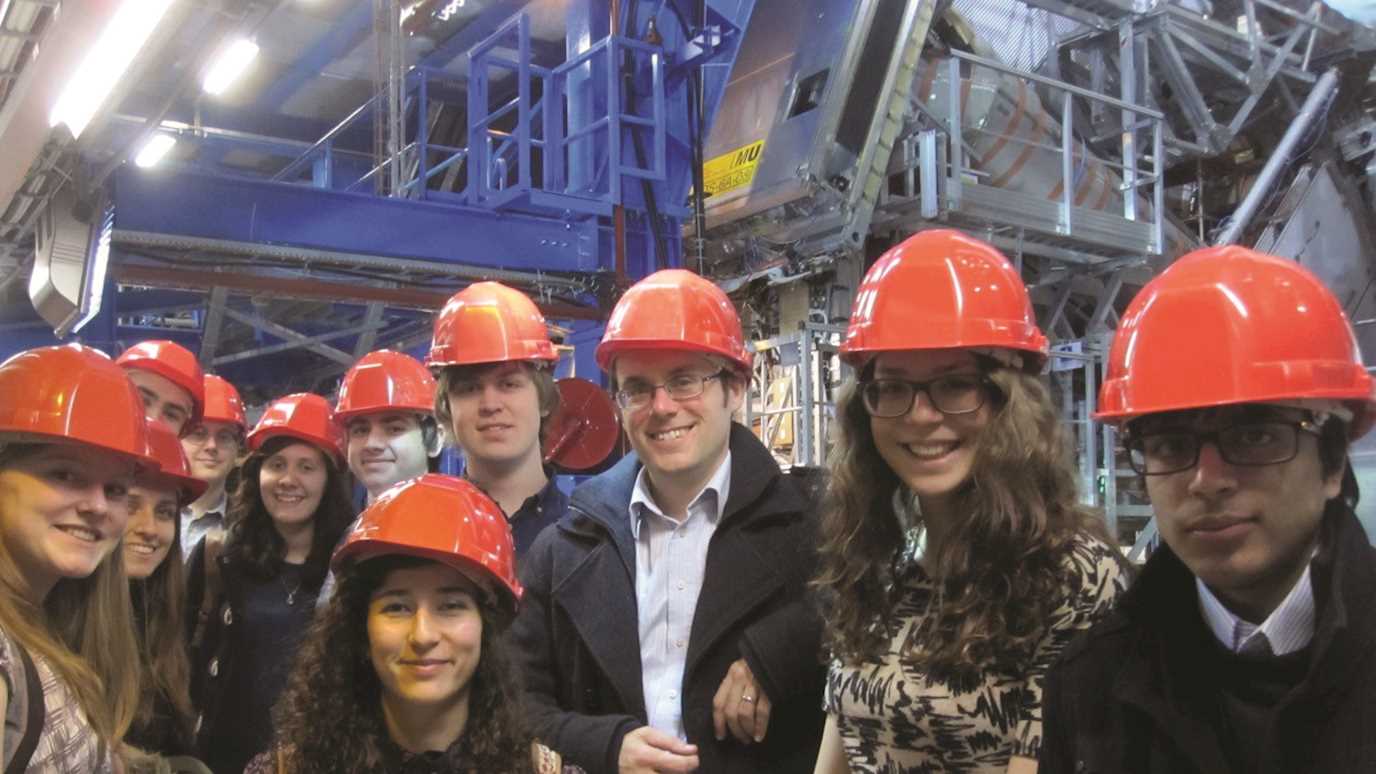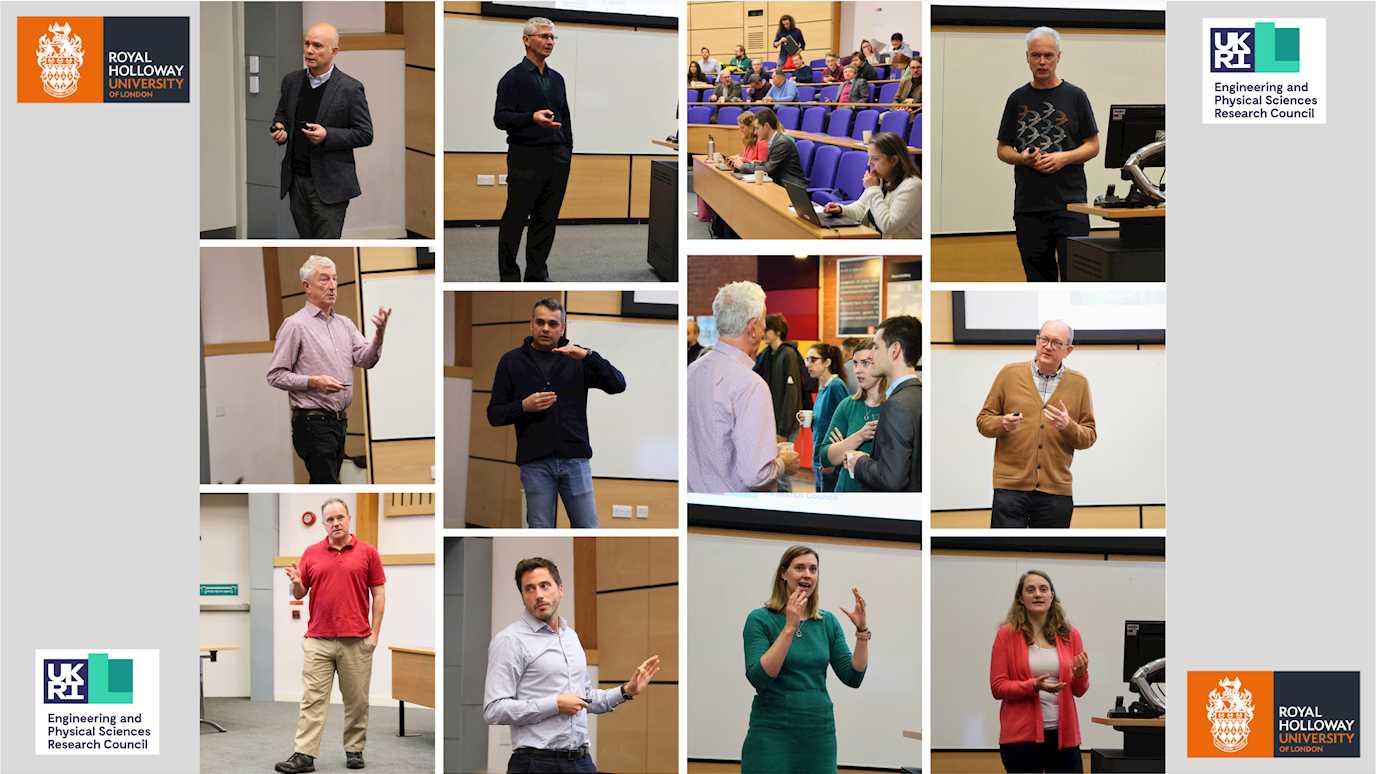The annual Royal Holloway Physics Christmas lecture 2019 started by taking a closer look at some particle beams, although as Siobhan pointed out, anyone hoping to find a lightsaber under the Christmas tree was in for some big disappointment. We were instead treated to a detailed explanation of how to make beams of charged particles, with a sneak peak at CERN's present to itself: the LINAC4 accelerator which uses negative hydrogen ions to start off the process of creating particle bunches.
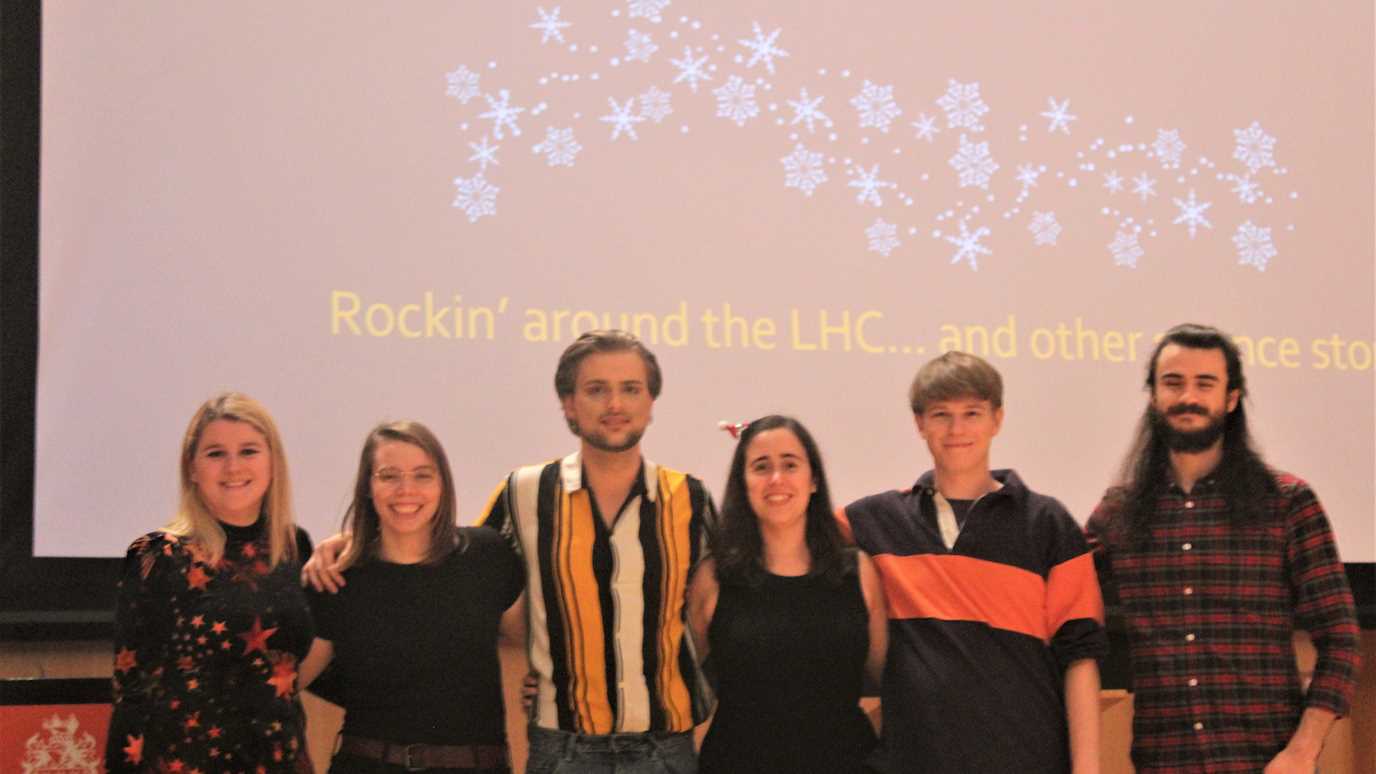
From left to right : Florence Roberts, Siobhan Alden, Adam Tarrant, Adriana Dias, Sebastian Spence, and Callum Booth
Following an investigation into how we now have a better idea of what components we need to build by simulating beams in Royal Holloway's own Beam Delivery SIMulation (BDSIM) software, Siobhan finished by explaining how we can measure exactly where these beams are in real accelerators using lasers to detect the beam, giving sci-fi fans something to make up for the lack of lightsabers.
Callum then took the lecture on a journey to Switzerland for a short Christmas break in Geneva in order to investigate the ATLAS detector at the Large Hadron Collider (LHC). Following on from Siobhan, we learned that each beam in this circular accelerator carries 6.5 trillion electron volts, which is the approximate equivalent of Santa, along with his sleigh and 9 reindeer carrying 5000 tonnes of presents at 335 miles per hour, proving once and for all that he could be real.
Once these two beams collide, we one-upped the New Year's fireworks display by looking at the spectacular reactions produced in the many layers of ATLAS' particle detection framework, taking the time to spot as many features of the Standard Model of Particle Physics as we could. This part of the talk closed by taking a look at the elusive Higgs Boson, which is responsible for giving mass to particles, and simultaneously providing a perfect excuse for eating too much over the holidays.
Adam then showed us one possible use for this LHC beam; passing it through his prototype next-generation neutrino detector, called the high-pressure time projection chamber. We first learned more about neutrinos and most notably how hard they are to detect, but how their oscillations and flavour changing properties make them of particular interest to physicists.
We then looked at other ways to observe neutrino properties, including using the Earth itself to pass neutrinos through in hopes of understanding this mysterious mechanism of moving between electron-, muon- and tau-type neutrinos, as well as some recycling within physics by repurposing parts of upgraded detectors to make highly sensitive equipment capable of clearly seeing cosmic ray neutrinos bombarding Earth from the far reaches of space.
Our tour of the world then continued with Adriana taking us over to Argentina to investigate a problem affecting millions of people worldwide, but is being solved using physics techniques first developed in the search for dark matter. Heavy metal poisoning, especially from lead, is among the top three concerns for the World Health Organisation, with a 0.87 parts per billion upper limit for lead in water.
Fortunately, it is science to the rescue by using specifically altered E. Coli bacteria which can fluoresce in the presence of water containing lead-210. This light can then be detected by a CMOS sensor and analysed by a computer. While this might sound like a complex procedure, you are most likely looking at a perfectly capable computer and CMOS sensor right now; your mobile phone, and more specifically its camera.
Currently in development are both the analysis and capturing software required to use a smartphone to take these measurements, with an Android version aiming for release in 2020. This is all thanks to advancements in the incredibly sensitive detection measurements developed in the hunt to dark matter, meaning that even if physicists have yet to find any signals from the far reaches of the galaxy, they can know they are making a tangible difference to the world we can see.
At this point our global tour came to a screeching halt as we were introduced to Sebastian's condensed matter fridge in the department's basement, just down the hill from the lecture theatre. Thankfully there were still cool things to be seen: very cool in fact, at an icy -273.1 degrees Celsius.
While on some December mornings you may think you are also at these temperatures, a simple test of whether fluids can now flow up the side and out of buckets should hopefully show you that the viscosity of things around you are still non-zero. If this is happening, then chances are the world around you is becoming part of one quantum state as all surrounding matter is resorting to a single wave state.
This rather abstract concept is just the stepping-off point to a whole world of magical effects; sound waves acting as particles, modelling absolutely everything as a set of masses connected by springs. This is all just a regular Tuesday evening for a condensed matter physicist.
Finally, our journey departed Earth entirely as Florence introduced us to the frontier of cyberspace. After establishing the average age of the audience by determining the most well-known sci-fi classic out of TRON, The Matrix and Ready Player One, we dived head first into virtual reality and started exploring.
While most people immediately associate VR with a purely visual experience, the "reality" part can be hugely augmented by using audio to support what the eyes are seeing. This exciting new concept involves using the same head tracking effects that visuals use and combining it with spatialization; sound sounding as we would expect it to.
Our tour was then rounded off with a few last words on the future of VR audio, including moving beyond stationary experiences and into exploring how sounds moves or adapts with the observer, before being safely returned to Windsor auditorium in time for a mince pie and a chat to all the speakers.
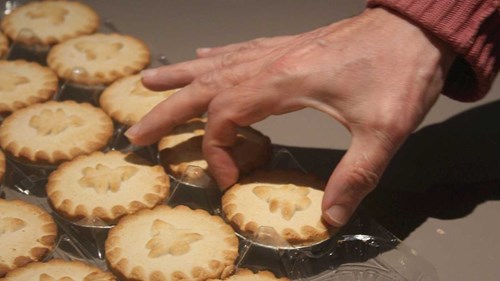
Audience members enjoyed the good range of topics from core research all the way into the real work applications, and the surprising range of applications that physics has. Here's to another amazing set of lectures next year!
Author : Alistair McShee
Photography : Katie Morris










